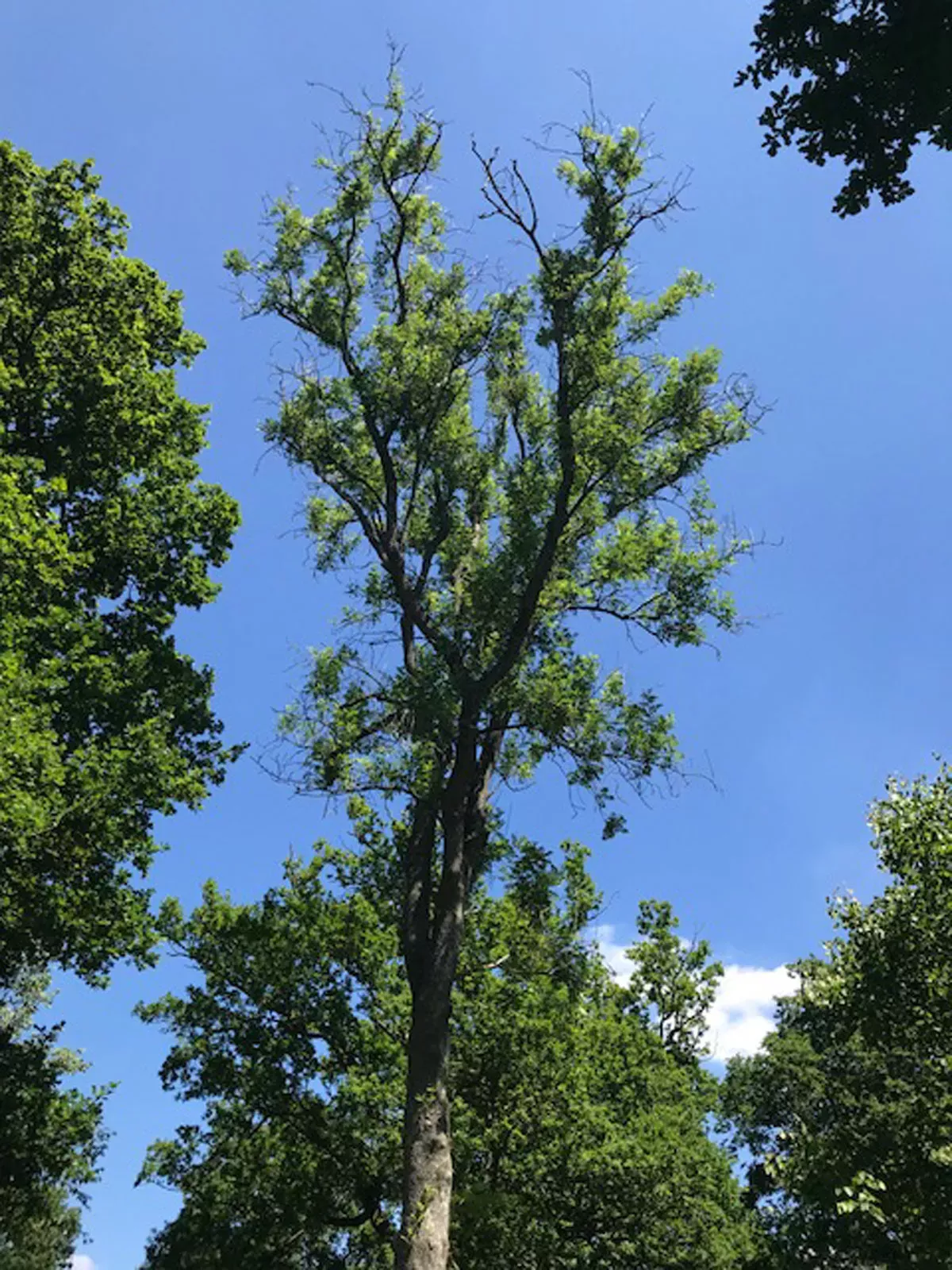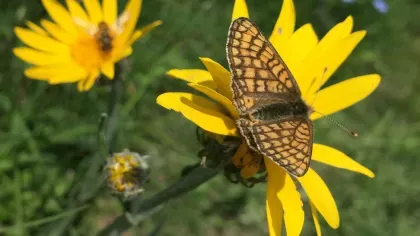6 September 2018
Fighting the ash dieback disease
Kew scientist Maryam Rafiqi explains how we are fighting back against a devastating fungal disease.

A deadly fungus
Fungal diseases have great economic impact worldwide. Crop losses due to fungi such as mildews, rusts, molds and cankers are a big threat to agriculture and global food security. Although, less well understood than crop diseases, fungal diseases of non-crop plants can cause huge and irreparable changes to natural habitats. One such disease is Chalara dieback of ash, also known as ash dieback. Caused by the ascomycete fungus Hymenoscyphus fraxineus, a pathogen of Asian origin, the disease threatens to dramatically change woodland and environmental landscapes in the UK and across Europe.
Ash (Fraxinus excelsior), is the third most common tree in Britain after oak and birch, and is susceptible to the emerging ash dieback epidemic. This disease is characterised by defoliation, crown dieback and ultimately the death of infected trees. First reported in 2002 in Poland, the disease has quickly spread east to west across Europe at an alarming rate, invading ash trees in forests and urban areas, including ash trees at Wakehurst, Kew’s wild botanic garden in West Sussex. Kew Scientists are working in partnership with a range of other organisations to understand why this pathogen is so destructive, and to try to discover mechanisms to halt the spread of the disease.
To cause a plant disease, fungal pathogens must modify the plants cell structure and overcome different layers of the plant immune system. They do this by secreting virulence factors, called effectors, into infected plant tissue. These fungal effector proteins can enter plant cells and “hack” the plant immune system and other molecular processes in favour of fungal growth and disease development.

Fighting back
The ash dieback epidemic is currently being intensively investigated in Kew’s Plant Health labs and quarantine house. Recently, I have collaborated with Dr. Mark McMullan from the Earlham Institute (Norwich), to analyse genes of the ash dieback fungal pathogen that are predicted to encode effector proteins. Some of these effector proteins are likely to be key contributing factors that can influence the outcome of the ash dieback disease emergence.
A critical area of research that I am now undertaking at Kew focuses on understanding the mechanisms of disease development of the ash dieback fungus. Interestingly, the ash dieback pathogen lives in equivalent Asian ash species, but without causing disease. I am investigating this and trying to understand the mechanisms that allow this fungus to switch from a harmless endophyte (living within the host without causing disease symptoms) to a destructive pathogen. I am also studying sets of effector genes in closely related fungal species in collaboration with scientists from the University of Copenhagen (Denmark) and the Earlham Institute (Norwich) in order to develop tools to fight the ash dieback disease.
References
McMullan, M., Rafiqi, M., et al. (2018).
The ash dieback invasion of Europe was founded by two genetically divergent individuals.
Nature Ecology & Evolution 2: 1000–1008.



